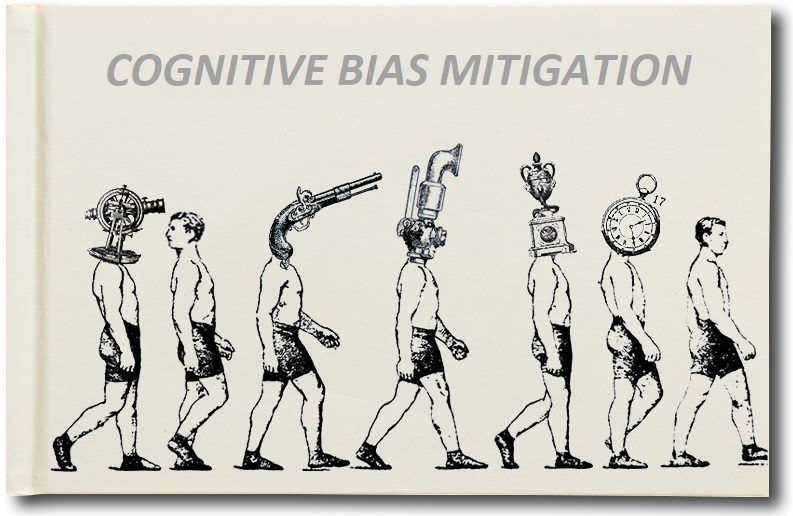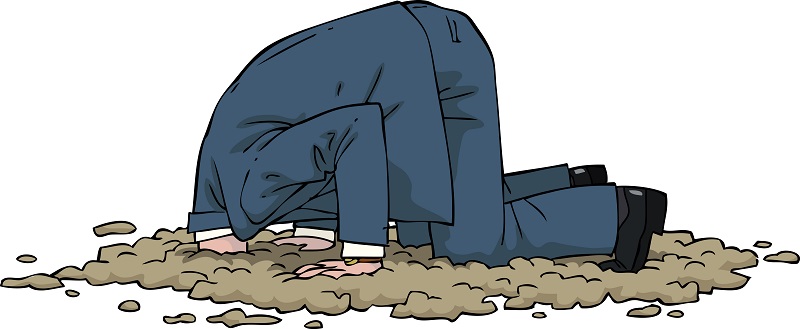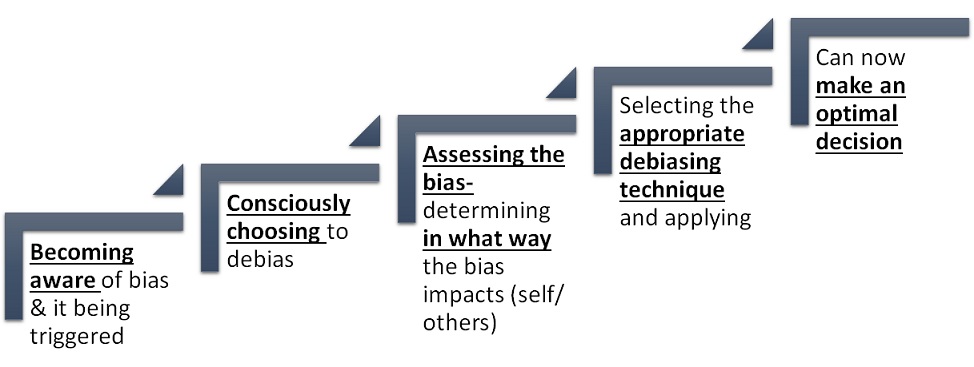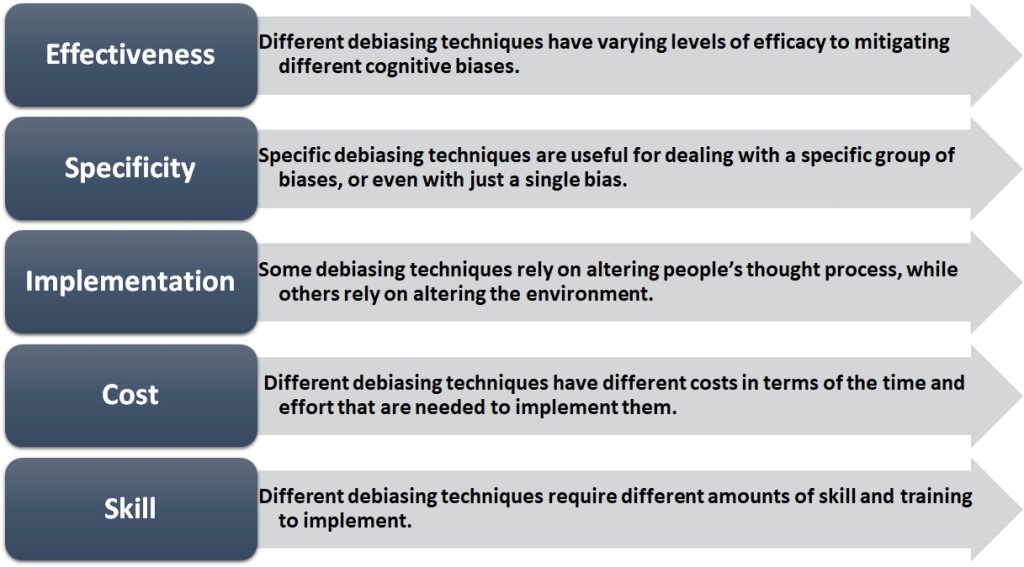
Cognitive bias mitigation (or Debiasing) is the practice through which we reduce the influence that cognitive biases have on people, to enable them to think in a more rational and optimal manner. Cognitive biases are systematic patterns of deviation from rationality, which occur due to the way our cognitive system works. Cognitive biases affect us in various areas of our life, from the way we interact with others to the way that we form our political opinions. Since these biases cause us to think and act in an irrational manner, their influence can be detrimental, which is why people often want to be able to mitigate them.
Examples of Cognitive Biases
Cognitive biases can influence our thinking in diverse ways, including the undermentioned:
A) Cognitive biases can affect how we form impressions of other people: -. . . For example, the halo effect is a cognitive bias that causes our impression of someone in one area to influence our opinion of that person in other areas. This bias can cause us to assume that a person is highly knowledgeable and has an interesting personality, simply because they are physically attractive.
B) Cognitive biases can affect how we acquire information: -. . . . For example, the ostrich effect is a cognitive bias that causes us to avoid situations where we might encounter information that we perceive as negative. This bias can cause us to avoid going to the doctor, if we believe that the doctor will have bad news for us, that we do not want to deal with.

C) Cognitive biases can affect how we prepare for the future: -. . . . For example, the pessimism bias is a cognitive bias that causes us to overestimate the likelihood that bad things will happen. This bias can cause us to assume that we are going to do badly on an exam, even if we are prepared for it and it is likely that we will do well.
Does Cognitive Debiasing Work?
Research shows that cognitive debiasing does work in some cases, and that proper training and interventions can help reduce certain biases. However, there are situations where it does not entirely work. For example, one study examined people’s optimism bias, when it comes to believing that one’s own risk of suffering from health issues is lower than that of others.
Despite attempts to correct this bias, the researchers found that people’s optimism bias persisted in the face of various debiasing interventions. This demonstrates that debiasing is not always straightforward and finding the appropriate debiasing techniques to use in a certain situation can sometimes be a difficult process.
Nevertheless, it is always ideal to function under the belief that debiasing might be effective. This means we should try and reduce cognitive biases where possible, as long as doing so is not associated with an excessive cost/ repercussion. It is important to be realistic when deciding on debiasing goals, and when we are assessing whether or not our debiasing attempts will be successful.
How To Debias: – Overview Of The Debiasing Process
There are several stages in the debiasing process.

First, a cognitive bias is triggered. Then, we must become aware of this bias, and realize that it has been triggered. Once we realize that the bias has been triggered, we must conclude if there is a need to debias and make a conscious choice and commit to debiasing. After (or if) we do choose to debias, we need to start by assessing the bias, which involves determining in what way the bias impacts us and (or) the people around us. Once we understand what we are dealing with, we need to select the appropriate debiasing technique and apply it. Once successfully debiased, we can now move on to make an optimal decision.
We can also add an additional step, by reassessing the situation after we apply the debiasing strategy, to determine whether the debiasing attempt worked. Else, we can repeat the previous step, and either implement a different debiasing strategy or attempt to implement the previous one again, until successful at debiasing.
Two things to be cautious of are:
a) It is often difficult to accurately assess whether or not we have debiased successfully.
b) Repeated debiasing attempts can often be difficult to implement in practice, especially if we are trying to debias someone else.
Exercising Metacognitive Strategies
Metacognition, which refers to the ability to be consciously aware of your thought process, stands at the core of cognitive-bias inoculation and mitigation. Metacognitive awareness aids in: –
a) being aware of the various cognitive pitfalls and errors that we might encounter when processing information and making decisions,
b) ensuring that we successfully identify cases where cognitive biases affect people,
c) successfully applying the relevant debiasing strategies, and,
d) ensuring that we accurately assess how successful the debiasing attempts are.
Differences between different debiasing techniques

***To be continued in Chapter 02 (Various Debiasing Techniques for everyday situations)- Link to Chapter – 02:
*Source Credits:
- The book- Thinking, Fast and Slow by Daniel Kahneman
- The book- Nudge by -Richard H. Thaler & Cass R. Sunstein
Content Curated By: Dr Shoury Kuttappa.


One reply on “COGNITIVE BIASES: MANIFESTATION AND MITIGATION TECHNIQUES – (CHAPTER 01)”
[…] Link to Chapter 01: https://shouryoryx.wordpress.com/2021/03/23/cognitive-biases-manifestation-and-mitigation-techniques… […]
LikeLike